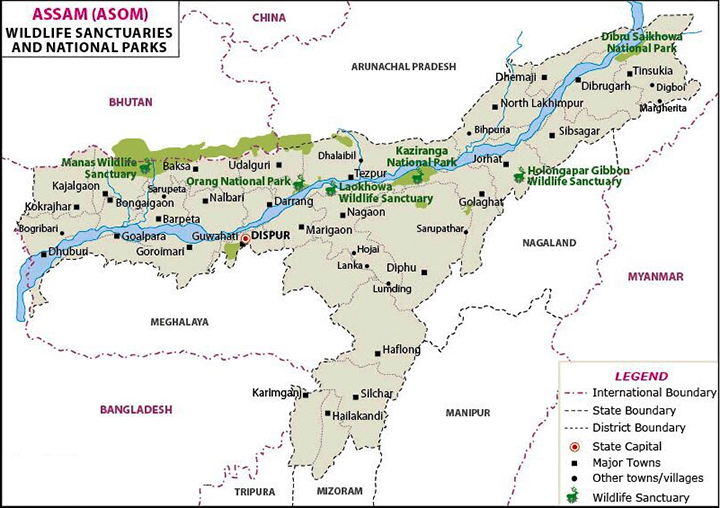Biodiversity & Environment
Kaziranga Animal Corridor
- 10 May 2021
- 4 min read
Why in News
There are cases of clearance of forest land, digging and construction activities on at least three animal corridors within the eco-sensitive zone of the Kaziranga National Park and Tiger Reserve.
- The Supreme Court of India in its 2019 order had said that “No new construction shall be permitted on private lands which form part of the nine identified animal corridors.”
Key Points
- About the Animal Corridor:
- Wildlife or animal corridors are meant to ensure safe passage for animals between two isolated habitats.
- In wildlife parlance, corridors are mainly of two types: functional and structural.
- Functional corridors are defined in terms of functionality from the perspective of the animal (basically areas where there have been recorded movement of wildlife).
- Structural corridors are contiguous strips of forested areas and structurally connect the otherwise fragmented blocks of the landscape.
- When structural corridors are affected by human anthropogenic activities, functional corridors automatically widen because of animal use.
- Kaziranga Animal Corridor:
- A special committee formed by the Supreme Court in its report had recommended the delineation of nine animal corridors in Kaziranga National Park (KNP). The nine identified animal corridors are:
- Amguri, Bagori, Chirang, Deosur, Harmati, Hatidandi and Kanchanjuri are in Nagaon district and Haldibari and Panbari corridors are in Golaghat district of Assam.
- The nine corridors that already exist behave as functional corridors, but according to the new recommendation, the corridors will act as both structural and functional, on the basis of need.
- The report suggested that structural corridors should be made free of all human induced disturbances except for the forestry and wildlife management practices.
- On the other hand, functional corridors (which might become important when structural corridors are disturbed), can have regulated multi-use with restrictions on land use change.
- Significance of Animal Corridors:
- These corridors are crucial for the rhinos, elephants, tigers, deer and other animals that escape a flooded Kaziranga during the monsoon months for the safety of the hills of Karbi Anglong district beyond the highway skirting the southern boundary of the tiger reserve.
- Once the rain clear, the animals make their way back to the grasslands.
- A special committee formed by the Supreme Court in its report had recommended the delineation of nine animal corridors in Kaziranga National Park (KNP). The nine identified animal corridors are:
- Kaziranga National Park and Tiger Reserve:
- It is located in the State of Assam and covers 42,996 Hectare (ha).
- It is the single largest undisturbed and representative area in the Brahmaputra Valley floodplain.
- It was declared as a National Park in 1974.
- It has been declared a tiger reserve since 2007.
- It was declared a UNESCO World Heritage Site in 1985.
- It is recognized as an Important Bird Area by BirdLife International.
- It is the home of the world's most one-horned rhinos.
- Pobitora Wildlife Sanctuary has the highest density of one-horned rhinos in the world and second highest number of Rhinos in Assam after Kaziranga National Park.
- The National Highway 37 passes through the park area.
- The park also has more than 250 seasonal water bodies, besides the Diphlu River running through it.
- Other National Parks in Assam:
- Dibru-Saikhowa National Park,
- Manas National Park,
- Nameri National Park,
- Rajiv Gandhi Orang National Park.







